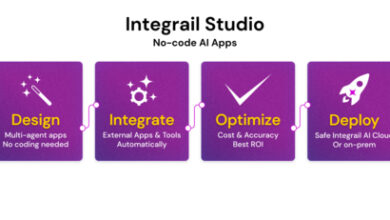Understanding AML Screening: A Comprehensive Guide
In today’s complex financial landscape, Anti-Money Laundering (AML) screening has become an indispensable tool for financial institutions and businesses worldwide. This comprehensive guide will delve into the intricacies of AML screening, its importance, key regulations, processes, and best practices.
What is AML Screening?
AML screening is a critical process used by financial institutions and other regulated entities to identify and prevent money laundering activities. It involves scrutinizing customer information, transactions, and other relevant data against various watch lists, sanction lists, and risk databases.
At its core, AML screening aims to:
- Identify potentially high-risk individuals or entities
- Detect suspicious patterns or behaviors indicative of money laundering
- Ensure compliance with regulatory requirements
- Protect the integrity of the financial system
AML screening is not a one-time event but an ongoing process that continues throughout the customer relationship lifecycle.
The Importance of AML Screening
The significance of AML screening cannot be overstated in today’s interconnected global economy. Here’s why it’s crucial:
- Regulatory Compliance: AML screening is a legal requirement in most jurisdictions. Failure to implement adequate screening measures can result in severe penalties and reputational damage.
- Financial Crime Prevention: Effective screening helps detect and prevent various financial crimes, including money laundering, terrorist financing, and fraud.
- Reputational Protection: By implementing robust AML screening processes, institutions safeguard their reputation and maintain trust with customers, partners, and regulators.
- Global Financial Stability: Collectively, AML efforts contribute to the stability and integrity of the global financial system by making it harder for criminals to exploit legitimate financial channels.
- Risk Management: AML screening is a key component of an institution’s overall risk management strategy, helping to identify and mitigate potential risks associated with customers and transactions.
Key Regulations Governing AML and Name Screening
AML screening is governed by a complex web of international standards and national regulations. Some of the key regulatory frameworks include:
- FATF Recommendations: The Financial Action Task Force (FATF) sets global standards for combating money laundering and terrorist financing. Their recommendations form the basis for many national AML regulations.
- USA PATRIOT Act: In the United States, this act expanded AML requirements and introduced more stringent customer identification programs.
- EU Anti-Money Laundering Directives: The European Union has implemented several directives (currently on the 6th iteration) to combat money laundering and terrorist financing across member states.
- Bank Secrecy Act (BSA): This U.S. law requires financial institutions to assist government agencies in detecting and preventing money laundering.
- Local Regulations: Many countries have their own specific AML laws and regulations, such as the UK’s Proceeds of Crime Act or Australia’s Anti-Money Laundering and Counter-Terrorism Financing Act.
Financial institutions must stay updated on these regulations and ensure their AML screening processes comply with all applicable laws.
How AML Screening Works
AML screening is a multi-faceted process that involves several key steps:
- Customer Due Diligence (CDD):
- Collecting and verifying customer information
- Assessing the customer’s risk profile
- Ongoing monitoring of the customer relationship
- Watch List Screening:
- Checking customer information against various sanction lists, politically exposed persons (PEP) lists, and other relevant databases
- Identifying potential matches and assessing their validity
- Transaction Monitoring:
- Analyzing customer transactions for suspicious patterns or behaviors
- Flagging unusual activities for further investigation
- Risk Scoring:
- Assigning risk scores to customers based on various factors such as their background, transaction history, and geographic location
- Adjusting the level of due diligence and monitoring based on the risk score
- Alert Management:
- Investigating alerts generated by the screening process
- Determining whether suspicious activity reports (SARs) need to be filed
- Ongoing Monitoring:
- Continuously updating customer information and reassessing risk profiles
- Conducting periodic rescreening of the customer base
The effectiveness of AML screening relies heavily on the quality of data, the sophistication of screening tools, and the expertise of compliance personnel.
Best Practices for Effective AML Screening and Transaction Monitoring
To maximize the effectiveness of AML screening efforts, institutions should consider the following best practices:
- Implement a Risk-Based Approach:
- Tailor screening intensity based on the risk profile of customers and transactions
- Allocate resources more efficiently by focusing on higher-risk areas
- Ensure Data Quality and Integration:
- Maintain accurate and up-to-date customer information
- Integrate data from various sources for a comprehensive view of customer activity
- Leverage Advanced Technology:
- Utilize AI and machine learning to enhance screening accuracy and efficiency
- Implement real-time screening capabilities for faster risk detection
- Develop Clear Policies and Procedures:
- Establish well-defined processes for handling alerts and escalations
- Regularly review and update policies to align with changing regulations and emerging risks
- Invest in Training and Expertise:
- Provide ongoing training for compliance staff to stay updated on the latest AML trends and techniques
- Consider hiring or consulting with AML experts to enhance your screening program
- Conduct Regular Audits and Testing:
- Perform periodic audits of your AML screening processes to identify gaps and areas for improvement
- Test your screening systems regularly to ensure they’re functioning as intended
- Foster a Culture of Compliance:
- Promote awareness of AML risks and responsibilities across the organization
- Encourage a proactive approach to identifying and reporting suspicious activities
- Collaborate and Share Information:
- Participate in industry forums and information-sharing initiatives
- Collaborate with regulators and law enforcement agencies to enhance AML efforts
- Maintain Detailed Documentation:
- Keep comprehensive records of screening activities, investigations, and decision-making processes
- Ensure documentation is readily available for regulatory examinations and audits
- Stay Agile and Adaptive:
- Continuously monitor for new money laundering techniques and emerging risks
- Be prepared to quickly adjust your screening processes in response to new threats or regulatory changes
By implementing these best practices, financial institutions can significantly enhance the effectiveness of their AML screening efforts, better protect themselves from financial crimes, and ensure compliance with regulatory requirements.
Conclusion
AML screening is a critical component of modern financial compliance and risk management. As money laundering techniques become more sophisticated and regulations more stringent, the importance of robust AML screening processes cannot be overstated.
By understanding the fundamentals of AML screening, staying informed about key regulations, implementing effective screening processes, and following best practices, financial institutions can better protect themselves and the broader financial system from the threats of money laundering and financial crime.
Remember, AML screening is not just about ticking regulatory boxes – it’s about playing an active role in maintaining the integrity of the global financial system. As technology evolves and new challenges emerge, the field of AML screening will continue to adapt, making it an ever-important area for financial professionals to monitor and master.


